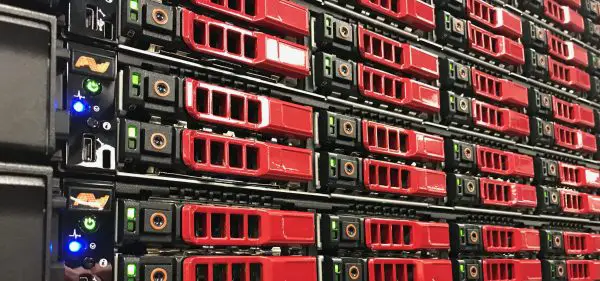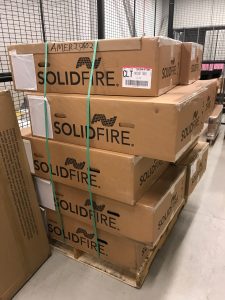
 Deploying a Solidfire cluster may be one so the easiest deployments I’ve ever been a part of. With a bit of pre-planning for the network, setting up a Solidfire cluster is straight-forward and quick.
Deploying a Solidfire cluster may be one so the easiest deployments I’ve ever been a part of. With a bit of pre-planning for the network, setting up a Solidfire cluster is straight-forward and quick.
Walk Through
The nodes arrive like any other server, boxed, with a rack mounting kit and some basic instructions. Racking the nodes is inconsequential.
Networking includes two options – in-band and out-of-band management for the cluster. In-band involves using the dual 10Gig storage network for management also. This means that your storage network needs to be routable. Out-of-band means your cluster management is conducted across a separate network connected to dual 1Gig network adapters. There is also an IP Management Interface on each node, DHCP by default or configurable in BIOS. 3 or 5 connections per node. Once network is physically connected, you can move onto node configuration.
Each node comes with pre-deployed software on the node. Using the Terminal User Interface, or TUI as they call it, you setup a few network settings and the basic cluster settings to form a cluster. Once your network interfaces are configured in the TUI, you switch over to the web interface for a node.
In the node web interface, this is where you form the cluster. Since the IP for the cluster was entered in the TUI, all that is needed is a simple click of a button to create the cluster – and all of the nodes pre-configured will be adopted into the new cluster. [If the cluster config was not completed in the TUI, you can also do it in the Web UI.]
That’s it folks – cluster is online. Next step is adding iSCSI initiators, creating volumes, and consuming the storage. For configuring VMware Virtual Volumes (VVOLs), its a simple radio checkbox in the new cluster’s config, followed by registering the storage provider with vCenter. Following that, VMware automatically configured the ESXi nodes and protocol endpoints.
Solidfire Nodes
NetApp is currently selling 4 different configurations of its Solidfire nodes.
- SF4805 with 4.8TB of raw capacity & 50,000 IOPS
- SF9605 with 9.6tB of raw capacity & 50,000 IOPS
- SF19210 with 19.2TB of raw capacity & 100,000 IOPS
- SF38410 with 38.4TB of raw capacity & 100,000 IOPS
NetApp advertises 5x to 10x of usable capacity after mirroring and all software efficiencies. Its data protection algorithm is called Helix and its effectively a network mirroring technology where all of the data is spread across the nodes in the cluster. Solidfire allows thin provisioning, block data deduplication and compression. Solidfire is a block-only storage system – it is not a unified system with file services included. A major feature of the system is its Quality of Service implementation – the ability to not only suppress noisy volume, but guarantee minimum levels of performance for each volume in the system. The beauty of this is especially illustrated when deploying VMware VVOLs.
Comparison
One of my first projects with my new company has been a full market evaluation for our next generation storage platform. Storage in 2017 largely falls into two categories – your traditional controller-based architectures and your software-defined scale-out architectures. Controller-based are generally simpler arrays to manage with generally lower latency, however they have limits in scale and expansion. Software-defined scale-out arrays offer superior scale (capacity and performance) and expansion but that comes with more cabling and software complexity. Features vary array to array with unified arrays offering both file and block down to specific architectures for particular problems. All-flash arrays with in-line deduplication and compression level the costs associated with the flash storage they use, offering comparable pricing to spinning disks.
At the end of the day, Solidfire came out as our choice. I appreciate how much the Solidfire team has done to keep the complexity of their array under the covers and presenting a simple, intuitive interface to its customers.
